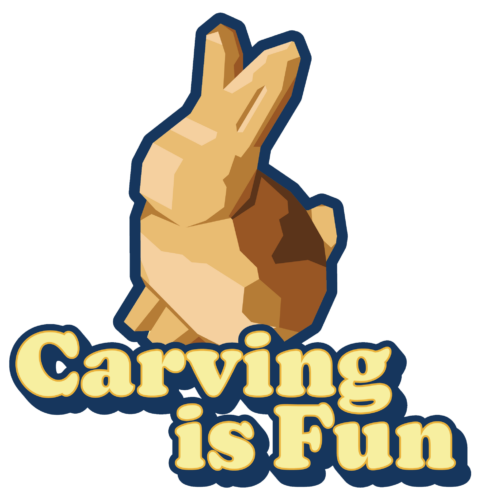Over the years, I have carved dozens of different species of wood from the super soft balsa wood to the super dense live oak. Each species of wood vary in carving difficulty that beginners and experienced whittlers and wood carvers need to be aware of.
You can carve with any wood you like but some woods like basswood and pine will be easier to work with and are ideal for beginners.
Below are some of my favorite woods to carve and various characteristics that you need to be aware of when carving them. The wood listed below will increase in hardness the further you go down with the exception of the first one as it is widely accepted to be the best option for wood carving.
We will be using Janka Hardness to compare the wood hardness of each of the species below, which is a globally accepted standard to test how hard a wood is to work with.
Basswood
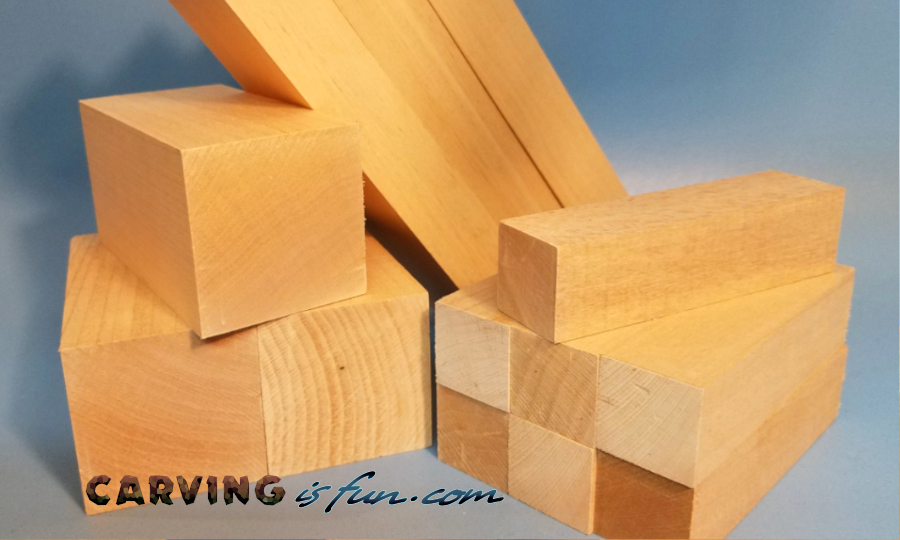
Basswood, also known as linden wood and lime wood, is widely accepted to be the best wood for whittling and wood carving as it is soft enough to easily carve with hand tools, hard enough to hold small details, has a fine and uniform wood grain, and is widely available.
Carving with basswood will be the best option for beginners looking to get into whittling and wood carving as it doesn’t easily split, is commonly available, can easily be carved with basic tools like a pocket knife, and is affordable.
| Janka Hardness (lbf) | 410 |
| Wood Grain | Fine |
| Beginner Friendly | Yes |
| Tool Wear | Low |
| Availability | Common |
You can easily buy basswood from many different suppliers at a great price in varying sizes like this Premium Basswood Variety Pack from Amazon
Balsa Wood
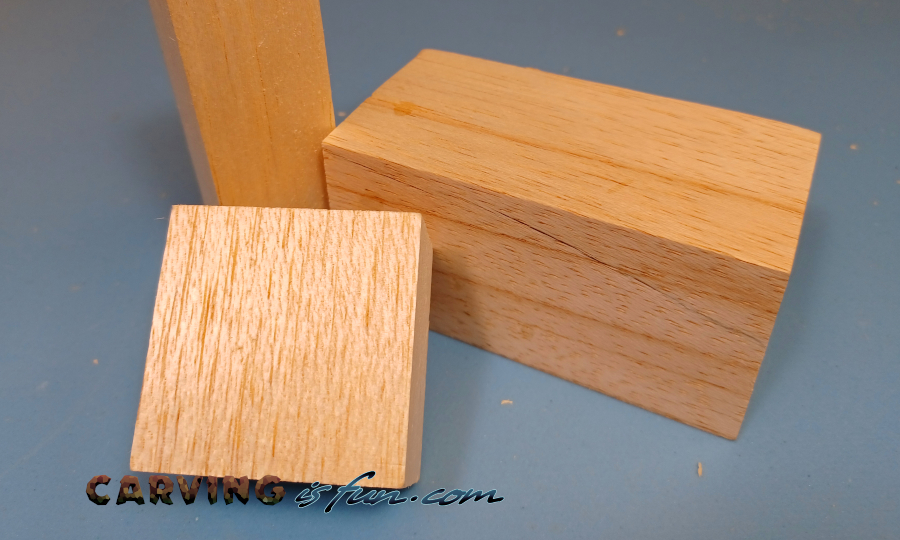
Beginners who wish to start wood carving but feel intimidated by carving harder woods will often start carving with balsa wood as it is soft and very easy to carve with basic carving tools. I typically suggest using this wood for those who have never carved wood before and want to get the feel for doing subtractive sculpting before buying more expensive tools and supplies.
Carving with balsa wood is similar to carving a very dense sponge. It feels firm in the hands but can be easily dented and deformed if squeezed too hard or dropped. I have found the best way to carve balsa wood is to use a slicing motion with a knife as this limits the deformation imparted on the wood from just pushing the blade through.
| Janka Hardness (lbf) | 90 |
| Wood Grain | Coarse |
| Beginner Friendly | Yes |
| Tool Wear | Low |
| Availability | Common |
Larger blocks of balsa wood can be harder to find since they are primarily sold in strips for other arts and crafts. You can find some really nice beginner kits like this one on Amazon that come with paint and finger tape to prevent cuts for a great price!
Eastern White Pine
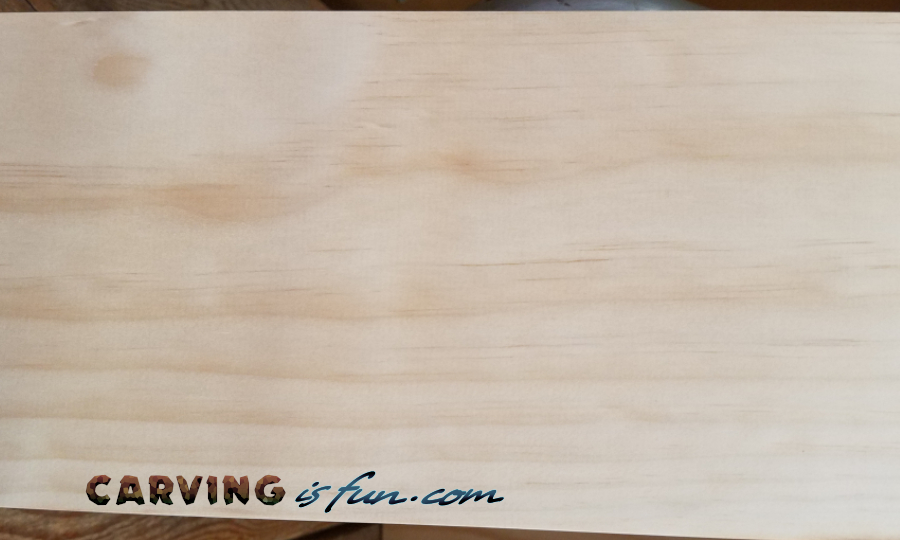
If I’m looking for a large piece of wood to carve for a great price, I will typically head over to my local hardware store and pick up some of their premium pine boards. This wood is a little softer than basswood, does have some inconsistencies in density while carving through the darker sections, but is usually knot free.
The premium pine is much nicer quality and consistency than the regular lumber normally found at the hardware store, but does cost a little more. Just keep in mind that the wood grain can be a little inconsistent and wavy in some spots.
| Janka Hardness (lbf) | 350 |
| Wood Grain | Varies |
| Beginner Friendly | Yes |
| Tool Wear | Low |
| Availability | Common |
Cottonwood

If you can source it, cottonwood is a really nice alternative to basswood and carves quite easily. They won’t usually be found in processed boards or planks, but can usually be found sold online as cottonwood bark.
This wood is great for beginners as it is easy to carve, allows you to add nice details, and has a nice darker color compared to that of basswood. Since the wood has a little coarser wood grain, you will have to pay a little more attention to make sure you aren’t cutting against the wood grain.
| Janka Hardness (lbf) | 430 |
| Wood Grain | Medium |
| Beginner Friendly | Yes |
| Tool Wear | Low |
| Availability | Common |
The best place that I have found people selling cottonwood bark is on ebay, click here to see current listings.
Butternut

Butternut is one of those beautiful and easy to carve woods that I sometimes just gravitate towards. It is rich in color, carves beautifully, and results in a very satisfying carving.
My favorite thing to carve out of butternut are wooden spoons as they look wonderful and are easy to make! Many others like carving with the wood and is popular among chip carvers as well. The only thing you need to keep in mind is that the wood grain is a bit coarse and can split easily if you cut against the wood grain.
| Janka Hardness (lbf) | 490 |
| Wood Grain | Coarse |
| Beginner Friendly | Yes |
| Tool Wear | Low |
| Availability | Limited Availability |
My favorite place to buy butternut spoon blanks is from Butternut Spoon Carver on Etsy, click here to go to his webshop.
Poplar

A very common wood that can easily be found is poplar as it is used in many applications like furniture and trim. You can easily find large planks of poplar in most hardware stores for a great price.
Poplar is noticeably harder to carve compared to basswood, but is still easy enough to do by hand. I personally prefer carving poplar over pine as it holds better detail and the wood grain is more consistent.
| Janka Hardness (lbf) | 540 |
| Wood Grain | Fine |
| Beginner Friendly | Somewhat |
| Tool Wear | Medium |
| Availability | Common |
Tupelo
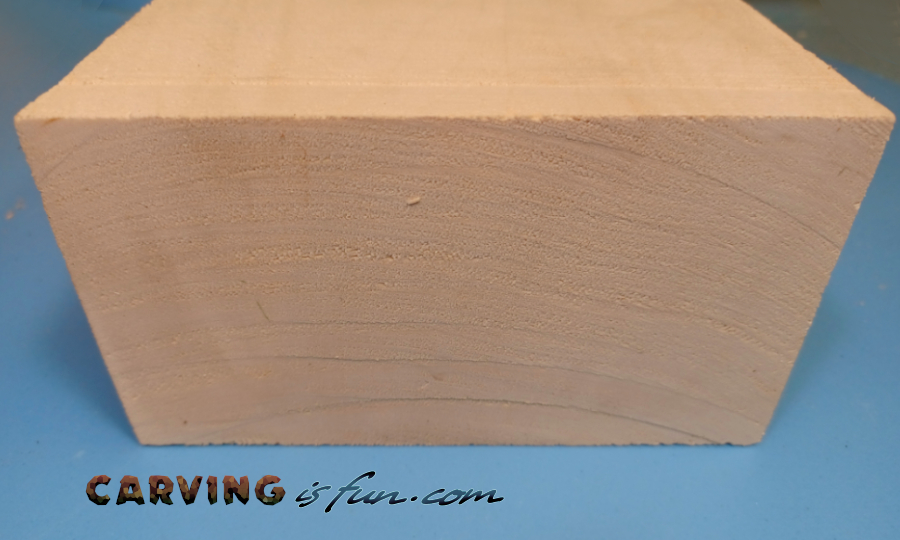
One of the most unique woods that I enjoy carving is tupelo as it is deceptively light but strong. This allows you to make carvings like flying birds without worrying about the weight of the wings causing the wood to break.
Carving tupelo is sometimes compared to carving dense butter. Even though it is a dense wood, it cuts very easily and I personally find it easy to work with. This wood is also popular among power carvers since it doesn’t splinter too easily. The only real downside is the limited availability, finding this wood locally may be hard to find unless you are in the South East United States.
| Janka Hardness (lbf) | 810 to 880 |
| Wood Grain | Fine |
| Beginner Friendly | Yes |
| Tool Wear | Medium |
| Availability | Limited Availability |
Cherry

If you are looking for a durable wood for every day use items like cooking spoons, Cherry is an excellent option! It has a beautiful coloration, is durable, and can be carved by hand.
One thing you have to keep in mind while carving cherry is that is is a much harder wood than all the ones shown above. You will have to constantly hone your tools to make sure they stay sharp and make sure to make smaller controlled cuts to prevent fatigue and advanced tool wear.
| Janka Hardness (lbf) | 950 |
| Wood Grain | Fine |
| Beginner Friendly | No |
| Tool Wear | High |
| Availability | Limited Availability |
My favorite place to buy cherry spoon blanks is from Butternut Spoon Carver on Etsy, click here to go to his webshop.
Walnut
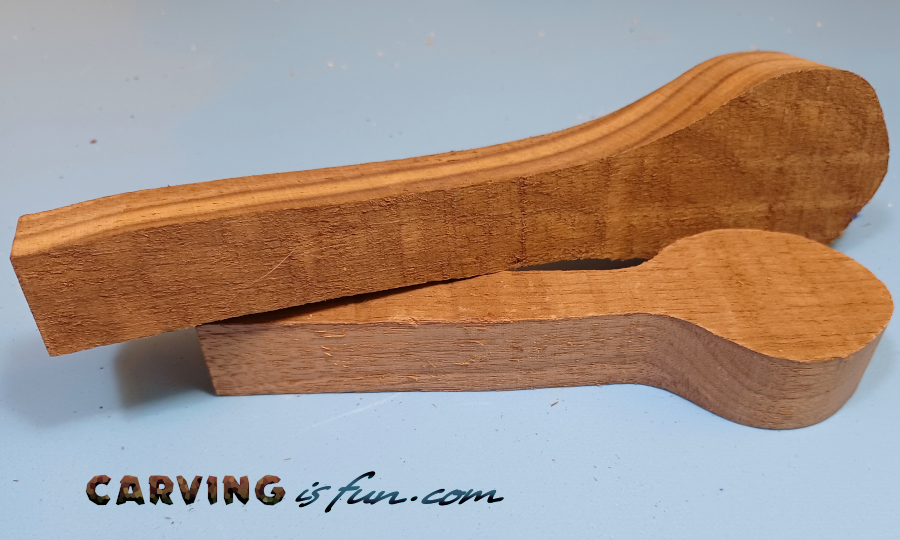
The hardest wood that I would consider for carving anything by hand is walnut. This wood is at the limit of my personal hardness tolerance but the end result is so rewarding! The absolutely stunning dark color of the wood really comes to light when coated in a clear finish and makes for amazing cookware.
When carving, keep in mind how hard the wood is. You will need to take it slow and keep your tools honed every 15 to 20 minutes of use. Don’t push yourself too hard and keep in mind that you don’t have to finish in one sitting. It is common for me to spread the process of making a spoon out over 3-4 carving sessions.
| Janka Hardness (lbf) | 1010 |
| Wood Grain | Medium |
| Beginner Friendly | No |
| Tool Wear | High |
| Availability | Common |
My favorite place to buy walnut spoon blanks is from Butternut Spoon Carver on Etsy, click here to go to his webshop.
What Wood Should You Carve With?
If you are new to whittling and wood carving, the question is “what wood should you carve?”
Those new to whittling and wood carving should start carving basswood as it can easily be carved with hand tools and has a very uniform wood grain that is easy to carve with. Other great wood options for carving would be pine, butternut, and poplar.
More Whittling Tips!
If you are new to whittling and want to get started, check out my complete whittling resource page here:
https://carvingisfun.com/Whittling/
